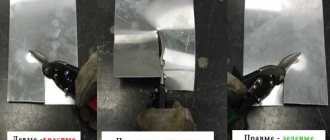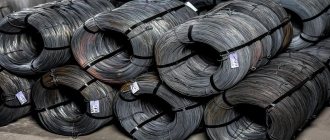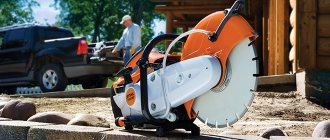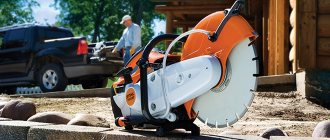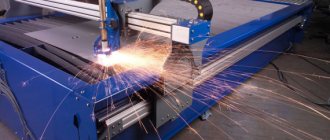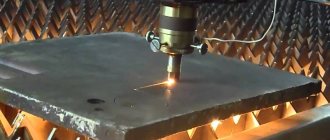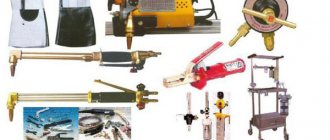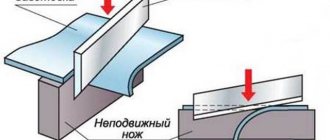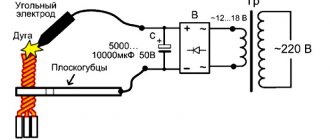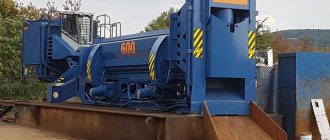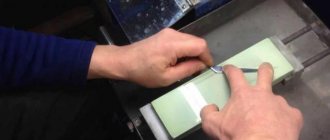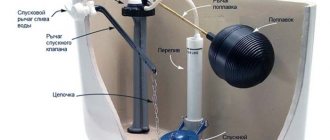Processing hard building materials often requires the use of special tools. The operation of cutting sheet metal is one of the most common. The equipment that allows it to be performed efficiently is also quite diverse. Today, such problems are solved by thermal devices, laser systems, as well as sandblasting waterjet machines. At the same time, traditional mechanical tools remain relevant and also give good results. Such devices include guillotine shears, which are available on the market in a wide range.
Types of guillotines for metal cutting
Conventionally, the group of guillotine cutters can be divided into three segments. The first will include the most powerful electrical machines that operate on a drive mechanism and include a full-fledged motor in the device. These are the most powerful guillotine shears, with which you can cut metal sheets in production flow mode. Next comes the intermediate category of cutters, whose representatives do not have an electric drive, but also have a massive active element in the form of a cutter and a bed, the presence of which unites such models with the first class of planes.
If we are not talking about complex operations that are planned to be performed in large volumes, then it makes sense to use compact and low-maintenance cutters. These are manual guillotine shears, the design of which is maximally optimized for quick work with small workpieces. With this tool you can cut a small metal sheet to the desired size, spending a little effort on it.
Types of guillotines
For cutting thin material, manual guillotines are usually used.
In turn, if it is necessary to cut material with a large thickness, electric or hydraulic shears are used, which have a solid housing and increased strength characteristics.
The simplest types of devices include manual guillotines, which are equipped with a lever mechanism. In turn, hydraulically driven guillotines have a more complex device.
They have a capital body and a massive structure of complex configuration.
The main characteristics of their work are distinguished by the high accuracy of the resulting cut.
Also, mainly in production, electric and electromechanical guillotines are used, which have optimal reliability characteristics and are capable of providing high-quality cutting of material.
In addition, in industrial enterprises you can find knives with pneumatic drive. The operation of all types of guillotines is similar in principle.
In the photo below you can see a pneumatic guillotine, which is capable of providing high precision cutting of parts.
Technical structure of the equipment
Again, the design and its characteristics are determined by the type of specific model. If we talk about machine tools, their structure is represented by a supporting platform, a work table, an electric motor, a clamping mechanism, as well as cutting knives, which are set in motion after the power plant is activated. Manual guillotine metal shears are significantly different. They also have two knives, one of which remains motionless even during operation, but the principle of operation itself is based on muscular effort. The latest models also provide auxiliary mechanisms for sheet feeding and positioning. With the help of such devices, the operator can more accurately organize the continuous processing of metal with different parameters.
Instructions for working with guillotine shears
Guillotine shears are a highly dangerous mechanism, so you need to work with them in compliance with the clear rules prescribed in the labor safety instructions. Important:
- Before starting work, put on special clothing, remove foreign objects and check the serviceability of the tool.
- When working with a guillotine, use gloves, do not put your hands under the blades and do not use dull knives.
- After finishing work, clean and lubricate the machine, take off your overalls and take a shower.
These are not all the points in the instructions for working with guillotine shears. The complete instruction manual can be viewed here. It must be remembered that each machine has its own characteristics, so it is worth reading the operating instructions for the guillotine shears of the desired model. They may differ:
- drive;
- type of knives;
- acceptable sheet size;
- productivity;
- power;
- number of operations.
The process of separating metal consists of cutting and breaking. A good guillotine provides about 90% cutting and 10% scrap. This way the cut area is smooth and does not require additional processing. Dull knives or incorrect machine settings lead to a deterioration in the ratio in favor of scrap, creating a burr that can cut your hands.
Main characteristics of guillotine shears
Performance characteristics are the main criterion for choosing guillotine shears. One of the main parameters is the force with which the equipment and, in particular, the knife acts on the workpiece. Thus, the average value for power load for machine-made models is about 5-7 kg/mm2. Next, the width and thickness with which the guillotine shears work is taken into account. The characteristics of the machine equipment allow cutting sheets with a thickness of 0.5 to 3 mm. For hand tools, this figure rarely exceeds 2 mm. The width of the cut also matters in the work process. Depending on the model, this value can vary on average from 1000 to 1500 mm. The frequency of operations affects the overall productivity of the guillotine and is usually around 60 cuts per minute.
Electrical circuit diagram of guillotine shears H3121
Electrical diagram of guillotine shears N3121
The circuit is designed to control a machine with a rigid coupling to clearly engage and disengage the moving slide with the tool. The clutch is activated by an electromagnet, which is activated by an intermediate relay.
Complete shutdown of the circuit is carried out by the input circuit breaker.
Electrical equipment of scissors N3121
The machine is controlled from the control panel. on which control buttons and mode switches are located
The alarm system is electric and light; the designation of modes and controls is symbolic.
Allowed operating mode:
- automatic (continuous running);
- single move.
The machine can be controlled:
- buttons;
- pedal only on single strokes.
The electrical circuit includes the following circuits:
- A. AC power circuit, voltage 380 V.
- b. AC control circuit, voltage 36 V.
- V. AC lighting circuit, voltage 5.5 V.
The following receive power from the power circuit:
- A. Main drive electric motor.
- b. Pulling electromagnet.
- V. The control, lighting and alarm circuits receive power from the secondary windings of the 2T transformer.
Control and protection equipment (transformer, magnetic starters, circuit breaker) are located in the electrical cabinet.
The operation of the scissors is controlled from the control panel.
Description of the operation of the electrical circuit
The electrical circuit provides the ability to operate the scissors in the following modes: “Single stroke”; "Automatic moves."
The selection of the operating mode is carried out by readjusting the scissors (by adjusting the electromagnet thrust) and setting the operating mode switches PR and PU to the desired position, located in the lockable control panel. When resetting the PR and PU switches, the electric motor must be turned off with the 2KU button.
Single move mode
In this mode, operation with a button and a pedal is possible. The PR switch is set to the “Single stroke” position. The thrust of the electromagnet is mechanically adjusted.
a) Button Control
The PU switch is set to the “Button” position. When you press the “Drive Start” button (2KU) along the circuit 1-9-7-15-19-23-3-2, the magnetic starter 1K is turned on, which turns on the main drive electric motor (1D).
Through the normally closed contacts of the 4KU button and the 2K magnetic starter, the 1RP relay receives power via circuit 19-17-115-21-2, becomes self-powered, and with its normally open contacts (circuit 25-31) prepares the 2K magnetic starter, which turns on the electromagnet, for switching on. When you press the 4KU button, the 2K starter is turned on, and therefore the electromagnet E. The 2K starter, turning on, breaks the circuit 21-115 with its normally closed contact,
1 PR turns off and turns off with its no. O. contact circuit 25-31. This turns off the electromagnet E., i.e., electrical blocking from doubling of strokes.
b) Pedal control
The PU mode switch is set to the “Pedal control” position. When you press the “Drive Start” button (2KU), it turns on the electric motor of the main drive 1D.
When you press the pedal, the 2K magnetic starter and electromagnet E are turned on.
Electrical blocking against doubling of strokes is carried out in the same way as when operating buttons.
Automatic mode
The electromagnet thrust for automatic strokes is mechanically adjusted. The PR operating mode switch is set to the “Automatic” position, and the PU switch is set to the “Buttons” position.
When you press 4KU, the 2K magnetic starter is triggered and turns off the electromagnet. Starter 2K with its own no. O. contacts 25-105 become self-powered, automatic movements occur until the 3KU button is pressed.
Locking and alarm
Locking, which ensures complete voltage relief from all equipment when opening the electrical cabinet door, is achieved by turning off the 1A circuit breaker.
The interlock, which ensures that the control circuit is turned off, is achieved by the 1VK limit switch located in the electrical cabinet, which turns off the control circuit when the door is opened.
The blocking, which excludes the possibility of obtaining moves when the protective grille is raised, is carried out by the 2VK end.
The blocking, which prevents the clutch from engaging when operating on “Single and automatic strokes” without turning on the main drive, is achieved by contact 1K (circuit 15-19).
The electrical circuit provides an alarm indicating the presence of voltage in the control circuit. When voltage is applied, a white 1LS lamp on the control panel lights up.
When the main drive motor is turned on, green lamp 2 lights up on the control panel (engine is on).
Protection
Protection of the electrical equipment of the scissors from short circuit currents is carried out by a 1A circuit breaker and fuses 2P, 3P, 4P.
Thermal protection of the main drive motor is carried out by a thermal relay RT, built into 1K magnetic starters.
Zero protection of the electrical circuit is provided by magnetic starters 1K, 2K.
Safety precautions
The electrical equipment of the shears must be reliably grounded in accordance with the current “Rules for Electrical Installations” by connecting the shear frame and electrical cabinet to the workshop grounded circuit.
Before starting work, inspect the scissors and check the grounding.
In order to increase the safety of operating personnel, the electrical circuit provides for locking:
- electrical cabinet doors;
- control panel doors.
During long breaks in scissor work or after the end of the shift, the input circuit breaker is turned off.
The first switching on of the circuit breaker should be carried out briefly, followed by inspection and verification of the correctness of the light signals.
The control panel has a red mushroom-shaped “General Stop” button (1KU) to completely disable the circuit.
It is strictly forbidden to work with scissors if the locks are faulty.
The installation of PU and PR switches is carried out by an adjuster.
Access to the electrical cabinet is permitted only to electrical personnel assigned to the machine.
Engine characteristics
The operational capabilities of a guillotine machine are directly determined by the potential of the power plant, which provides the function of the knives. To begin with, you should divide the machines into models operating from a network of 220 and 380 V. Power is the main indicator of the unit’s performance and is usually 3-4 kW. This potential makes it possible to confidently handle thick sheets at high frequencies. By the way, the torque at which hydraulic guillotine shears operate can be 1200-1500 rpm. Here it is important to note the dependence of the electric motor on the design. So, the wider the cutting capabilities, the higher the power potential of the drive should be.
Operating principle
Man became familiar with the guillotine many centuries ago. However, in those distant times it was used not as a device for cutting metal, but for executing criminals. Modern varieties of scissors use the same operating principle as in the very first device, which had one upper knife. To cut metal, a blade is used, which is first raised to a certain height and then sharply lowered.
Mechanical scissors equipped with an electric drive use a slightly different algorithm. Their design includes a feeding device through which a metal sheet is supplied from the unwinder to the table. Next, the workpiece is leveled, focusing on the limiter for selecting the feed depth and the side stop. After this, it is rigidly fixed using a clamping mechanism made in the form of a beam. Thanks to this preparation, conditions are created to ensure sufficiently high cutting accuracy.
When the device starts, the gearbox engine transmits torque to the shaft, which directs its energy to the connecting rods and cranks, causing the crosshead to move back and forth. As a result of the movement of the traverse, the upper knife lowers and makes a cut. The scraps of material formed after cutting enter the tray, towards the operator, forward or backward - it all depends on the design of the scissors. The processed workpieces are sent to the receiver. After this, the traverse rises and takes its original upper position. The sensor immediately reacts to this, the signal from which turns off the gear motor.
The function of controlling the upper and lower position of the scissors cross-arm is assigned to the limit switches. In the upper part it is secured with a brake drum located on the shaft. Metal sheet cutting can be carried out longitudinally or transversely. It all depends on the type and location of the knives. With transverse cutting, the knife makes only one cut per working cycle, and with longitudinal cutting, several such cuts are made, and they are always accompanied by the translational movement of the metal workpiece along the table. The second mode is intended for cutting rolled materials into strips. It is also used to produce blanks from metal sheets longer than 2 m.
The force of gravity forces the sharply sharpened knife of the guillotine shears to move downwards from the top point. At the same time, its movement occurs with significant acceleration, since it has a fairly large weight, but at the same time it is not enough for through cutting through durable metal.
The chopping device cannot destroy the integrity of a metal workpiece solely due to its weight due to the fact that the knife is located at a height with a shorter run-up length than in similar first devices of the last millennium. In order for the cutting device to move at the required speed, a special structure is made for it, into which a knife weighing several tens of kilograms is installed.
These same reasons explain why guillotine shears use a lower fixed knife. Thus, modern guillotine machines operate simultaneously on the principle of both conventional scissors and a guillotine. Before cutting, the prepared material is placed on the work table between the lower and upper cutting blades. But because of this, the machine acquires a more complex design, which affects its cost. However, thanks to this solution, it is possible to ensure higher quality and accuracy of cutting metal sheets.
Technical characteristics of a manual guillotine for metal
The segment of manual guillotines for working with metal is mainly represented by saber-type units. Their design is based on a small panel or platform that holds the base, and the actual cutting is performed by a movable knife. As already noted, manual guillotine shears can handle sheets up to 2 mm thick. As a rule, in the case of stainless steel this figure is 1.5-1.7 mm. However, aluminum sheets can be cut with such a tool even with a thickness exceeding 2 mm. True, the cutting length is still noticeably inferior to full-fledged machines - in standard families the maximum reaches 1300 mm. On the other hand, such models benefit from their compact size and low weight, which rarely exceeds 100 kg. Accordingly, the manual guillotine can be transported around the work site to different points during installation operations, which simplifies the production and construction process.
Purpose and design
Guillotine shears are a type of industrial equipment that is used for cutting metal. This tool allows you to cut metal sheets up to 35 mm thick. However, for each machine this indicator will be different and depend on the type and purpose of the equipment for cutting rolled metal. These machines allow you to cut metal in various directions - straight, transversely and longitudinally.
Guillotine shears can cope with any materials - not only sheets, but also those with different sections - rectangular, angular and round. This equipment is superior to all other similar devices in its ability to provide higher cutting accuracy, the absence of defects in the cut areas, and the integrity of the protective polymer layer or paint coating.
The following main elements can be distinguished in the design of this instrument :
- Bed, which can be monolithic or made of welded sheets.
- Two knives.
The design of the frame consists of two racks, fastened together using a beam and a traverse. There is a rigidly fixed work table on it, providing conditions for convenient supply of the material to be cut. The lower knife is stationary, and the upper one is fixed on a movable beam. The table is equipped with extensions and a square for cutting long sheets, as well as a clamping mechanism. Among other elements, it has a graduated stop, which allows serial cutting, as well as a device for limiting the depth of feeding of products.
Powerful scissors must have a safety mechanism . In case of increased loads, a special pin is cut off, after which the cutting process stops. There are special types of scissors that have a return tray to collect waste after cutting the metal. For electrically driven tools, a beam is mounted on the stands to accommodate the gear motor connected to the shaft. The latter serves as a place for the brake drum and two cranks, connected by means of a connecting rod and brackets to a crossbeam on which the knives are located.
Consumables and components
In addition to guillotine equipment, manufacturers offer processing tool kits, personal protective equipment and control equipment. From the point of view of performing the main cutting operation, it is important to have high-quality diamond needle files on hand, which are most often used for metalworking operations with metal, as well as tiles and glass. These devices will help if the main work is performed by mechanical guillotine scissors, which do not allow obtaining a neat cut. In other words, needle files will make the edge better and smoother. Also, to adjust guillotine machines, sets of appropriate keys should be provided. Typically, an all-metal bench square is used for this purpose. As for personal protective equipment, the operator of an electrical machine must be equipped with it. The basic set includes: gloves, a filtering half mask, goggles and noise protection headphones.
Maintenance
It is mandatory that maintenance personnel check the reliability of fastening of the movable parts of the machine, the quality of fixation of the frame, and the correct location of the platform and work table. A correctly installed and adjusted machine will ensure cutting with high accuracy and without deviations from the technical specifications. Special attention is paid to the electric motor, which drives the guillotine shears and, in some models, is responsible for the automatic feeding of sheets. The condition of the oil, cooling systems and carbon brushes, if present, should be checked. Craftsmen also pay attention to the beam mechanisms that are involved in the transmission of torque. Clutches and gears must be in optimal working condition, otherwise the cutter function simply will not perform.
Reviews about manufacturers
The guillotine equipment segment is not as widespread as more technological and at the same time expensive devices for high-precision metal cutting. However, there is a choice. In particular, on the domestic market these products are represented by the brands Stalex, Anchor, MetalMaster, etc. The Stalex brand produces machines of good build quality that can handle hard grades of steel. This is largely due to the use of high-quality high-carbon cutters in the design of the machines. In addition, the welded design increases the reliability of the installation as a whole, therefore, the repair of Stalex guillotine shears is also delayed. As the users themselves note, after a long period of operation, only the sheet clamping mechanism and the system for limiting the depth of material supply will have to be restored. As for the models from and MetalMaster, they are mainly represented by manual reciprocating cutters with a simple design and convenient control mechanism. The only problem with operating such tools is the shortage of replacement knives, which is what equipment owners most often complain about.
Drawing of guillotine shears knife N3121-11-402
Drawing of guillotine shears knife N3121-11-402
Knife for guillotine shears 25 x 60 x 625
- Knives must be made of steel grades 5ХВ2С, 6ХВ2С and 6ХС according to GOST 5950-73
- Knife hardness - HRC 54 ... 58
- Surface flatness tolerance B - no more than 0.1 mm over a length of 100 mm
- Tolerance field of dimensions s a B of a set of knives - according to h11
- The permissible difference in the sizes of the set knives at the junction is no more than 0.03 mm
- H14; h14; ±IT14/2
- The following markings must be applied to the knife: trademark of the manufacturer, designation of the knife, quality control department mark, code (number) of the kit (for composite knives).
- The remaining technical requirements for the set of knives N3121-11-402 in accordance with GOST 25306-82 Flat knives for sheet shears. Main and connecting dimensions. Technical requirements
